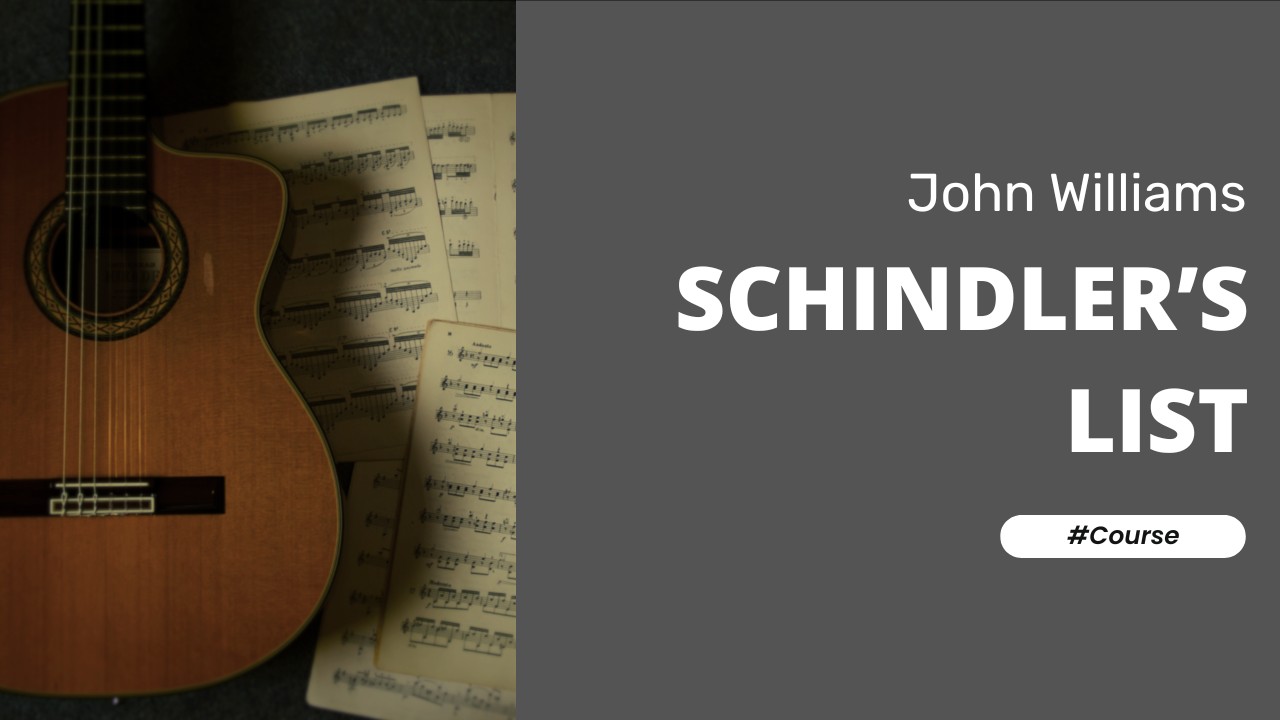Gnossienne No. 1 by Erik Satie
Introduction
“Gnossienne No. 1” by Eric Satie is one of three ‘Gnossiennes’ written by the enigmatic and somewhat eccentric French composer in the latter half of the 19th century. Satie, a contemporary of Hector Berlioz and Claude Debussy was known to be quite a strange fellow and his mysterious compositional style reflects his temperament and disembarkation from the compositional conventions of the period.
“Gnossienne No. 1” by Erik Satie is a captivating piece that exemplifies the composer’s innovative and avant-garde approach to music. Originally written for piano in 1890, this piece is part of Satie’s collection of Gnossiennes, which are notable for their free-form structure and enigmatic, introspective quality.
Transcribing “Gnossienne No. 1” for classical guitar brings a unique and intimate dimension to the piece, highlighting the instrument’s capacity for nuanced expression and tonal warmth. The haunting melody and sparse, haunting harmonies of the original are beautifully preserved in this arrangement, offering guitarists the opportunity to delve into the delicate, atmospheric world that Satie created.
Performing “Gnossienne No. 1” on classical guitar requires a sensitive touch and an appreciation for the piece’s subtle emotional shifts. The guitarist must capture the work’s ethereal quality through careful attention to dynamics and phrasing, ensuring that each note resonates with clarity and intention.
This piece’s unconventional time signatures and lack of bar lines invite a fluid, interpretive approach, allowing the performer to explore its introspective depth and haunting beauty. “Gnossienne No. 1” remains a testament to Satie’s genius in creating music that transcends traditional boundaries, making it a cherished addition to the classical guitar repertoire.
Musical Style
Erik Satie’s musical style is marked by its simplicity, originality, and avant-garde qualities. His compositions often feature sparse textures, unconventional harmonies, and a deliberate departure from the Romantic excesses of his time. Satie’s music is known for its emotional restraint, wry humour, and minimalist approach, which influenced later movements such as surrealism and minimalism. He often used repetitive structures and created pieces with a meditative, introspective quality. Satie’s works challenge traditional notions of musical form and aesthetics, making him a pivotal figure in the transition to modernist music.
Notable Pieces
Five notable pieces by Erik Satie:
• Gymnopédie No. 1
• Gnossienne No. 1
• Trois morceaux en forme de poire
• Parade
• Je te veux
Let your fingers fly!
Josh
Course Instructor
Gnossienne No. 1 Course
Gnossienne No. 1 Course
About this Course
Introduction
“Gnossienne No. 1” by Eric Satie is one of three ‘Gnossiennes’ written by the enigmatic and somewhat eccentric French composer in the latter half of the 19th century. Satie, a contemporary of Hector Berlioz and Claude Debussy was known to be quite a strange fellow and his mysterious compositional style reflects his temperament and disembarkation from the compositional conventions of the period.
“Gnossienne No. 1” by Erik Satie is a captivating piece that exemplifies the composer’s innovative and avant-garde approach to music. Originally written for piano in 1890, this piece is part of Satie’s collection of Gnossiennes, which are notable for their free-form structure and enigmatic, introspective quality.
Transcribing “Gnossienne No. 1” for classical guitar brings a unique and intimate dimension to the piece, highlighting the instrument’s capacity for nuanced expression and tonal warmth. The haunting melody and sparse, haunting harmonies of the original are beautifully preserved in this arrangement, offering guitarists the opportunity to delve into the delicate, atmospheric world that Satie created.
Performing “Gnossienne No. 1” on classical guitar requires a sensitive touch and an appreciation for the piece’s subtle emotional shifts. The guitarist must capture the work’s ethereal quality through careful attention to dynamics and phrasing, ensuring that each note resonates with clarity and intention.
This piece’s unconventional time signatures and lack of bar lines invite a fluid, interpretive approach, allowing the performer to explore its introspective depth and haunting beauty. “Gnossienne No. 1” remains a testament to Satie’s genius in creating music that transcends traditional boundaries, making it a cherished addition to the classical guitar repertoire.
Musical Style
Erik Satie’s musical style is marked by its simplicity, originality, and avant-garde qualities. His compositions often feature sparse textures, unconventional harmonies, and a deliberate departure from the Romantic excesses of his time. Satie’s music is known for its emotional restraint, wry humour, and minimalist approach, which influenced later movements such as surrealism and minimalism. He often used repetitive structures and created pieces with a meditative, introspective quality. Satie’s works challenge traditional notions of musical form and aesthetics, making him a pivotal figure in the transition to modernist music.
Notable Pieces
Five notable pieces by Erik Satie:
• Gymnopédie No. 1
• Gnossienne No. 1
• Trois morceaux en forme de poire
• Parade
• Je te veux
Let your fingers fly!
Josh





